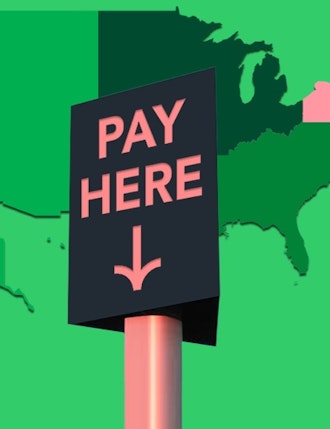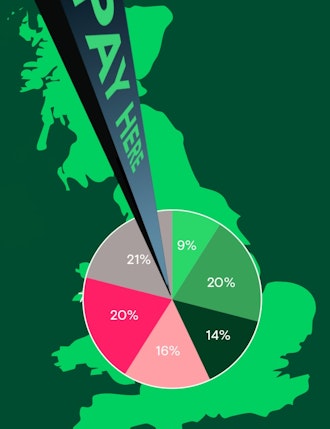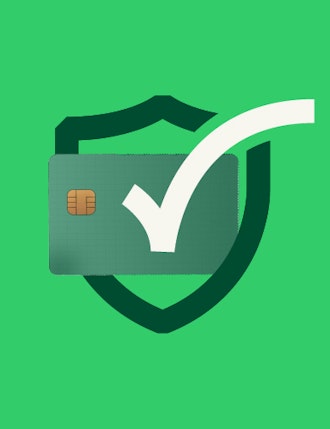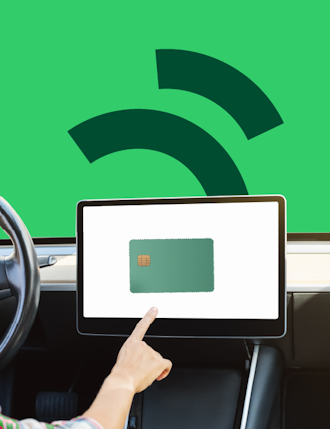Key Insights
-
Open banking is driving a wave of innovation and competition, allowing fintech startups to enter the market and offering businesses a broader range of tailored payment services.
-
By integrating various financial services, open banking significantly enhances customer experiences, enabling personalized, real-time payment solutions that cater to individual needs.
-
Open banking reduces transaction costs by eliminating middlemen, improving cash flow, and allowing businesses to offer more competitive pricing to their customers.
-
Security and compliance are paramount in open banking, with advanced measures like encryption and fraud detection ensuring the safety of customer data while maintaining system flexibility.
-
Aevi’s in-person payments orchestration platform is designed to thrive in the open banking environment, offering adaptable, secure, and seamless payment solutions that help businesses stay ahead of the competition.
Don't have time to read more now? Sign up to our newsletter to get the latest insights directly in your inbox.
Open banking is shaking up the payments scene like never before.
Think of it as the fintech equivalent of giving traditional banking a software update, introducing a wave of new features and efficiencies that modernize the entire financial ecosystem, opening up vast new possibilities for businesses and consumers alike.
But what exactly does open banking mean for the payments industry, and why is everyone from startups to big banks jumping on board? Let’s break it down, dig into some real-world scenarios, and see how this seismic shift is transforming the way money moves.
What is open banking?
Open banking simplifies financial management by allowing different services to securely share data while keeping your information safe, and therefore it benefits both individuals and businesses. For individuals, it enables apps to access bank data securely, offering better financial management and personalized services. For businesses, it streamlines payments, improves cash flow, and provides flexible payment options. In essence, open banking uses open APIs to let third-party providers access customer banking data (with their permission, of course) to create innovative financial products and services. This "data liberation" gives consumers more control over their finances and provides businesses with tools to better meet their needs.
What does open banking mean for the payments industry?
Before diving into how and why open banking is transforming the payments industry, it’s helpful to first understand the state of financial services before open banking came into play.
Before open banking, financial services were often siloed, with banks and financial institutions holding customer data tightly within their own systems. This made it difficult for individuals to get a comprehensive view of their financial health, and for businesses to integrate with multiple financial services efficiently. Transactions and data sharing were cumbersome and lacked flexibility, leading to higher costs and slower processes. In fact, before open banking, it was reported that 90% of SMEs did not have the necessary resources to benefit from technical integrations with banks.
But, with the introduction of open banking, everything changed, and here’s how…
- Increased competition and innovation
Open banking opens the market to new players, expanding beyond traditional banks and a few payment providers. Fintech startups are now entering the scene, boosting competition and driving innovation. For example, challenger banks like Monzo and Revolut have gained millions of users with their intuitive, user-friendly apps. As a result, businesses now have a wide range of payment services to choose from, tailored to meet diverse customer needs. According to Payments Journal, “About half of the top 20 financial institutions are dipping their toes into services like external account aggregation and third-party access oversight and control. A handful of them are advancing further with capabilities such as automated direct deposit switching and card-on-file management.”
- Enhanced customer experience
In open banking, the customer is king, and they know it. By integrating a range of financial services, businesses can offer unified, personalized payment experiences that make customers feel like VIPs. For example, a customer’s favorite coffee shop can automatically track that customer’s spending habits and offer them a loyalty discount at checkout, all without lifting a finger. Real-time payment processing and instant transfers mean no more waiting around for funds to clear, whether you’re buying a flat white or closing a big business deal.
- Cost reduction and streamlining
Remember the days when every transaction felt like it was padded with unnecessary fees? Open banking is helping to eliminate those middlemen, reducing transaction costs and letting businesses pass on the savings to customers by 20%. For merchants, this means more competitive pricing, better cash flow, and the ability to reinvest those savings back into their business.
- Security and compliance
With great power comes great responsibility. The open flow of data in open banking demands tight security and compliance measures. We’re talking about strong encryption, two-factor authentication, and advanced fraud detection systems designed to protect against even the most determined cyber threats. For businesses, this means partnering with platforms like Aevi that prioritize security without compromising on flexibility. In an era where data breaches are a daily headline, the ability to guarantee customer data safety isn’t just important, it’s non-negotiable.
- Data-driven insights
Open banking turns data into a goldmine of insights, with as much precision as being able to predict customer behavior before they even walk through your door. By analyzing transaction patterns and financial habits, businesses can tailor their marketing strategies to speak directly to their customer every time. For instance, a retailer could offer personalized discounts to customers based on their spending trends, driving up sales and loyalty in one fell swoop. To further demonstrate how this works in real-time, we’ve put together a quick, explanatory video on YouTube to show you how our device-agnostic platform can do this.
How open banking impacts different industries
From opening doors for fintech disruptors to pushing traditional banks to up their game, the impact of open banking is far-reaching, especially in these 6 industries:
Fintech startups:
Open banking makes it easier for fintech startups to enter the market by providing access to bank data via APIs. This enables them to quickly develop innovative financial products and collaborate with traditional banks to enhance their offerings.
Traditional banks:
Traditional banks can use open banking to expand their services and stay competitive. By integrating new features through open banking, banks can improve customer retention and attract new clients with enhanced digital solutions.
Merchants:
Open banking offers merchants flexible payment options, reduced processing costs, and faster transactions. This improves cash flow and enhances the overall shopping experience for customers.
ISVs:
ISVs can leverage open banking to integrate advanced financial services into their products, such as instant bank-to-bank transfers, or real-time fraud detection, providing end-to-end payment solutions that meet evolving customer needs.
PSPs:
PSPs benefit from open banking by diversifying their payment options and expanding their service portfolios, attracting new customer segments and enhancing their offerings. For example, imagine a PSP that traditionally offered only credit card processing. With open banking, they can now integrate direct bank transfers, real-time payments, and even account-to-account transfers into their platform. This expansion allows them to cater to a wider range of customer needs, from businesses seeking lower transaction fees to those requiring faster payment settlements.
ISOs:
ISOs can stay ahead by offering secure, cutting-edge payment technologies in an open banking environment. This allows them to provide versatile and competitive payment solutions to merchants. (This is a big one, and certainly warrants its own article, so if you’re an ISO, consider reading our complementary recurring revenue streams whitepaper for some deeply insightful intel.)
Why open banking has become a buzzword
So, why is everyone talking about open banking? It’s the perfect storm of regulatory change, consumer demand for better services, and technological advancements. Europe and the UK have led the charge with regulations like PSD2 (the Revised Payment Services Directive), which mandates that banks must open up their data to third-party providers. This regulatory push has ignited interest worldwide, with more regions looking to replicate this success.
In addition to this, open banking promises to increase financial inclusion, particularly in regions where access to traditional banking is limited. By lowering the barriers to entry, it’s enabling more people to access financial services, which in turn is driving demand for more innovative, customer-focused solutions.
Aevi’s in-person payments orchestration platform is designed to be as adaptable and flexible as the open banking environment itself. Whether you’re a fintech startup looking to break into the market or a traditional bank seeking to innovate, Aevi offers the secure, compliant, and seamless payment experience you need to stay ahead. By utilizing Aevi’s platform, businesses can unify their payment experiences across different channels, ensuring they’re not just keeping up with the competition, but setting the pace. So, if you’re ready to get set and go, speak to one of our team today.
Interested in reading more around this subject? Here are some useful articles…













